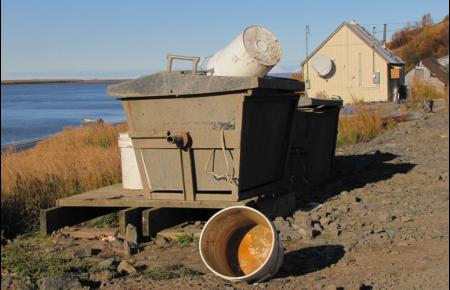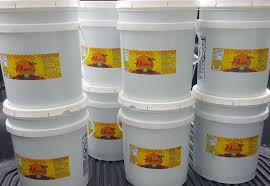

Human excreta of rich people were sold at higher prices because their diet was better presumably, more nutrients remained in their excreta. That was good additional income for apartment owners.

In the city of Edo, compost merchants gathered feces to sell to farmers. The reuse of feces as fertilizer was common in Japan.
#HONEY BUCKETS FULL#
The collector would hang full honey buckets onto each end of a pole he carried on his shoulder and then proceeded to carry it through the streets until he reached the collection point.Ĭhinese has a similar euphemism for night soil collection, 倒夜香 dàoyèxiāng, which literally means "emptying nocturnal fragrance". The method of transporting the honey buckets from individual households to collection centers was very similar to delivering water supplies by an unskilled laborer, with the exception that the item being transported was not at all potable and it was being delivered from the household, rather than to the household. During the Nationalist era when the Kuomintang ruled mainland China, as well as Chinatown in Singapore, the night soil collector usually arrived with spare and relatively empty honey buckets to exchange for the full honey buckets.
#HONEY BUCKETS MANUAL#
The collection method is generally very manual and heavily relies on close human contact with the waste. Following the development of the economy and the standard of living after independence, the night soil system in Singapore is now merely a curious anecdote from the time of colonial rule when new systems developed. Post- World War II Chinatown, Singapore, before the independence of Singapore, utilized night-soil collection as a primary means of waste disposal, especially as much of the infrastructure was damaged and took a long time to rebuild following the Battle of Singapore and subsequent Japanese Occupation of Singapore. The term is known, or even infamous, among the generations that were born in parts of China or Chinatowns (depending on the development of the infrastructure) before 1960. China, Hong Kong, and Singapore Ī woman carrying buckets of night-soil, photographed in 1871. The sewage system of ancient Athens collected the sewage of the city in a large reservoir and then channelled it to the Cephissus river valley for use as fertilizer. The use of sewage as fertilizer was common in ancient Attica. Some municipalities create compost from the sewage sludge, but then recommend that it only be used on flower beds, not vegetable gardens. The safe reduction of human excreta into compost is possible. These risks are reduced by proper fecal sludge management, e.g. Common parasitic worm infections, such as ascariasis, in these countries are linked to night soil use in agriculture, because the helminth eggs are in feces and can thus be transmitted from one infected person to another person ( fecal-oral transmission of disease). Nevertheless, in some developing nations it is still widespread. The use of unprocessed human feces as fertilizer is a risky practice as it may contain disease-causing pathogens. In areas where native soil is of poor quality, the local population may weigh the risk of using night soil. Human excreta may be attractive as fertilizer because of the high demand for fertilizer and the relative availability of the material to create night soil. In isolated rural areas such as in farms, the householders usually disposed of the night soil themselves. The vehicle used for collection has been called a night-cart, and its operator a night-man or night-cart man. In urban areas, before deep drainage, a night soil collector usually arrived during the night, hence its name. The material was collected for temporary storage and disposed of depending on local custom.ĭisposal has varied through time.

This system may still be used in isolated rural areas or in urban slums in developing countries. Often the deposition or excretion occurred within the residence, such as in a shophouse. The excrement in the pail was often covered with ashes or earth (soil), which may have contributed to the term "night soil". Feces were excreted into a container such as a chamber pot, and sometimes collected in the container with urine and other waste ("slops", hence slopping out).


 0 kommentar(er)
0 kommentar(er)
